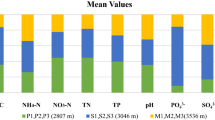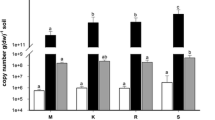Abstract
Fungi are widely distributed in all terrestrial ecosystems, and they are essential to the recycling of nutrients in all terrestrial habitats on earth. We wanted to determine the relationship between soil fungal communities and geochemical factors (geographical location and soil physicochemical properties) in three widely separated geographical regions (the Antarctic, Arctic, and Tibet Plateau). Using high-throughput Illumina amplicon sequencing, we characterized the fungal communities in 53 soil samples collected from the three regions. The fungal richness and diversity indices were not significantly different among the three regions. However, fungal community composition and many fungal taxa (Thelebolales, Verrucariales, Sordariales, Chaetothyriales, Hypocreales, Pleosporales, Capnodiales, and Dothideales) significantly differed among three regions. Furthermore, geographical location (latitude and altitude) and six soil physicochemical properties (SiO42−-Si, pH, NO3−-N, organic nitrogen, NO2−-N, and organic carbon) were significant geochemical factors those were correlated with the soil fungal community composition. These results suggest that many geochemical factors influence the distribution of the fungal species within the Antarctic, Arctic, and Tibet Plateau.





Similar content being viewed by others
References
Baas Becking LGM (1934) Geobiologie of inleiding tot de milieukunde. WP Van Stockum & Zoon, The Hague (in Dutch)
Bahram M (2012) Biogeography of ectomycorrhizal fungi across different spatial scales. Doctoral dissertation
Berry D, Mahfoudh KB, Wagner M, Loy A (2011) Barcoded primers used in multiplex amplicon pyrosequencing bias amplification. Appl Environ Microb 77:7846–7849
Blackwell M (2011) The fungi: 1, 2, 3… 51 million species? Am J Bot 98:426–438
Bridge PD, Spooner BM (2012) Non-lichenized Antarctic fungi: transient visitors or members of a cryptic ecosystem? Fungal Ecol 5:381–394
Chen YL, Deng Y, Ding JZ, Hu HW, Xu TL, Li F, Yang YH (2017) Distinct microbial communities in the active and permafrost layers on the Tibetan Plateau. Mol Ecol 26:6608–6620
Cox F, Newsham KK, Bol R, Dungait JA, Robinson CH (2016) Not poles apart: Antarctic soil fungal communities show similarities to those of the distant Arctic. Ecol Lett 19:528–536
Davison J, Moora M, Öpik M, Adholeya A, Ainsaar L, Bâ A, Johnson NC (2015) Global assessment of arbuscular mycorrhizal fungus diversity reveals very low endemism. Science 349:970–973
Dong K, Tripathi B, Moroenyane I, Kim W, Li N, Chu H, Adams J (2016) Soil fungal community development in a high Arctic glacier foreland follows a directional replacement model, with a mid-successional diversity maximum. Sci Rep UK 6:26360
Dreesens LL, Lee CK, Cary SC (2014) The distribution and identity of edaphic fungi in the McMurdo dry valleys. Biology 3:466–483
Edgar RC (2013) UPARSE: highly accurate OTU sequences from microbial amplicon reads. Nat Methods 10:996–998
Edgar RC, Haas BJ, Clemente JC, Quince C, Knight R (2011) UCHIME improves sensitivity and speed of chimera detection. Bioinformatics 27:2194–2200
Fröhlich-Nowoisky J, Burrows SM, Xie Z, Engling G, Solomon PA, Fraser MP, Andreae MO (2012) Biogeography in the air: fungal diversity over land and oceans. Biogeosciences 9:1125
Gittel A, Bárta J, Kohoutová I, Mikutta R, Owens S, Gilbert J, Lashchinskiy N (2014) Distinct microbial communities associated with buried soils in the Siberian tundra. ISME J 8:841
Gostinčar C, Grube M, De Hoog S, Zalar P, Gunde-Cimerman N (2009) Extremotolerance in fungi: evolution on the edge. FEMS Microbiol Ecol 71:2–11
Grau O, Geml J, Pérez-Haase A, Ninot JM, Semenova-Nelsen TA, Peñuelas J (2017) Abrupt changes in the composition and function of fungal communities along an environmental gradient in the High Arctic. Mol Ecol 26:4798–4810
Kirk PM, Cannon PF, Minter DW, Stalpers JA (2008) Dictionary of the fungi, 10th edn. CAB International, Wallingford
Kõljalg U, Nilsson RH, Abarenkov K, Tedersoo L, Taylor AF, Bahram M, Douglas B (2013) Towards a unified paradigm for sequence-based identification of fungi. Mol Ecol 22:5271–5277
Magoč T, Salzberg SL (2011) FLASH: fast length adjustment of short reads to improve genome assemblies. Bioinformatics 27:2957–2963
Newsham KK, Hopkins DW, Carvalhais LC, Fretwell PT, Rushton SP, O’Donnell AG, Dennis PG (2016) Relationship between soil fungal diversity and temperature in the maritime Antarctic. Nat Climate Change 6:182
Nguyen NH, Song Z, Bates ST, Branco S, Tedersoo L, Menke J, Kennedy PG (2016) FUNGuild: an open annotation tool for parsing fungal community datasets by ecological guild. Fungal Ecol 20:241–248
O’Donnell JL, Kelly RP, Lowell NC, Port JA (2016) Indexed PCR primers induce template-specific bias in large-scale DNA sequencing studies. PLoS ONE 11:e0148698
Peay KG, Kennedy PG, Talbot JM (2016) Dimensions of biodiversity in the Earth mycobiome. Nat Rev Microbiol 14:434
Talbot JM, Bruns TD, Taylor JW, Smith DP, Branco S, Glassman SI, Peay KG (2014) Endemism and functional convergence across the North American soil mycobiome. Proc Natl Acad Sci USA 111:6341–6346
Tedersoo L, Bahram M, Põlme S, Kõljalg U, Yorou NS, Wijesundera R, Smith ME (2014) Global diversity and geography of soil fungi. Science 346:1256688
Thomas-Hall SR, Turchetti B, Buzzini P, Branda E, Boekhout T, Theelen B, Watson K (2010) Cold-adapted yeasts from Antarctica and the Italian Alps—description of three novel species: Mrakia robertii sp. nov., Mrakia blollopis sp. nov. and Mrakiella niccombsii sp. nov.. Extremophiles 14: 47–59
UNITE Community (2017) UNITE QIIME release Version 01122017. UNITE Community. https://doi.org/10.15156/BIO/587481
Větrovský T, Kohout P, Kopecký M, Machac A, Man M, Bahnmann BD, Lepinay C (2019) A meta-analysis of global fungal distribution reveals climate-driven patterns. Nat Commun 10:1–9
White TJ, Bruns T, Lee SJWT, Taylor JL (1990) Amplification and direct sequencing of fungal ribosomal RNA genes for phylogenetics. PCR Protoc 18:315–322
Yang T, Adams JM, Shi Y, Sun H, Cheng L, Zhang Y, Chu H (2017) Fungal community assemblages in a high elevation desert environment: absence of dispersal limitation and edaphic effects in surface soil. Soil Biol Biochem 115:393–402
Yuan C, Zhang L, Hu H, Wang J, Shen J, He J (2018) The biogeography of fungal communities in paddy soils is mainly driven by geographic distance. J Soil Sediment 18:1795–1805
Zhang T, Wang NF, Liu HY, Zhang YQ, Yu LY (2016a) Soil pH is a key determinant of soil fungal community composition in the Ny-Ålesund Region, Svalbard (High Arctic). Front Microbiol 7:227
Zhang Y, Dong S, Gao Q, Liu S, Zhou H, Ganjurjav H, Wang X (2016b) Climate change and human activities altered the diversity and composition of soil microbial community in alpine grasslands of the Qinghai-Tibetan Plateau. Sci Total Environ 562:353–363
Acknowledgements
This research was supported by National Natural Science Foundation of China (NSFC) (Grant nos. 31670025 and 81621064); National Science and Technology Project of China (Nos. 2017ZX09301072 and 2018ZX09711001-007-001); Projects of the Chinese Arctic and Antarctic Administration, State Oceanic Administration; National Infrastructure of Microbial Resources (Grant No. NIMR-2020-3); CAMS Innovation Fund for Medical Sciences (Grant No. 2016-I2M-2-002).
Author information
Authors and Affiliations
Corresponding authors
Ethics declarations
Conflict of interest
The authors have no conflicts of interest to declare.
Additional information
Communicated by A. Oren.
Publisher's Note
Springer Nature remains neutral with regard to jurisdictional claims in published maps and institutional affiliations.
Electronic supplementary material
Below is the link to the electronic supplementary material.
Rights and permissions
About this article
Cite this article
Zhang, T., Wang, N. & Yu, L. Soil fungal community composition differs significantly among the Antarctic, Arctic, and Tibetan Plateau. Extremophiles 24, 821–829 (2020). https://doi.org/10.1007/s00792-020-01197-7
Received:
Accepted:
Published:
Issue Date:
DOI: https://doi.org/10.1007/s00792-020-01197-7




